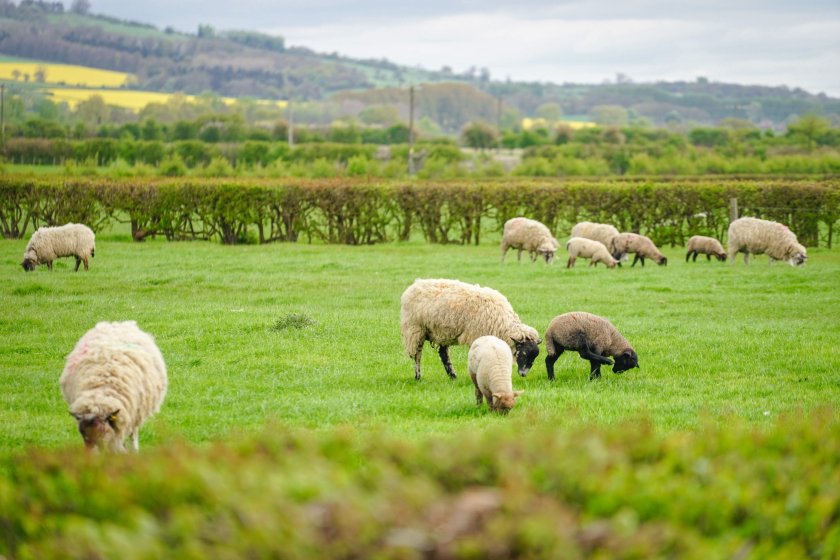
Farmers are being told to 'beware, take action and be vigilant' for a new strain of Bluetongue virus amid 'increasing concern' about the situation in Europe.
The new warning comes as a new strain of bluetongue virus (BTV-3) recently emerged in the Netherlands, where it is spreading rapidly.
As of early October, the virus has been reported on more than 700 farms in the Netherlands.
And just this week, a new case has been reported in Belgium, meaning BTV-3 is now in two European countries.
The last outbreak of bluetongue in the UK was in 2007, meaning it has been officially free of the virus since 2011
But experts at industry body Ruminant Health and Welfare (RH&W) said today (11 October) there was increasing concern about the disease entering the UK.
BTV-3 is a viral disease transmitted by biting midges, which affects all ruminants and camelids.
The existing vaccine does not offer cross-protection against this new BTV-3 strain, making any likely outbreak difficult to control.
RH&W has facilitated emergency meetings this week, bringing together over 40 key stakeholders and representatives from across the industry.
Dr Joseph Henry, president of the Sheep Veterinary Society and member of RH&W’s steering group, said farmers needed to follow three steps.
"Farmers need to beware when buying animals in, especially from Europe, take action to report any signs of the disease, and at all times, remain vigilant.
"It’s so important that we follow the advice to take action and prioritise good biosecurity measures while remaining extremely vigilant to the disease at this stage."
He added: “It remains extremely difficult to protect against midges and a vector borne disease, however, there is always a role for good biosecurity and insecticides.
"But it’s important to differentiate between products licensed for use on animals, and those designed for use on building and vehicles.”
Updating on the emerging threat, Cat Mclaughlin, NFU chief animal welfare advisor and member of RH&W, said: “BTV-3 appears to mimic BTV-8 in its behaviour, leading us to be extremely cautious to the risk it poses.
“There are no reports of the new strain in the UK. But due to the nature of bluetongue’s ability to spread via infected midges, and current warm weather conditions, the risk of it reaching the UK is increasing."
Phil Stocker, National Sheep Association (NSA) chief executive, added that bluetongue did not pose a threat to human health, but it remained a notifiable disease.
“We’d strongly advise farmers to beware when buying livestock from Europe, and to request pre-movement testing of animals prior to departure,” he said.
“All imports of live animals are subject to post-import testing with restricted movements until a negative post-import test result has been confirmed, so caution is key.”
Symptoms of BTV-3 can vary across ruminants, with sheep generally exhibiting more overt symptoms than cattle, but both can showcase clinical signs.
These include in sheep; drooling, mouth lesions, high fever, lameness and oedema (swollen heads) and sudden death.
Cattle are not usually as severely affected but may show similar clinical signs as well as teat, eye, coronary band and nose lesions.
What is the latest advice?
RH&W’s advice to farmers and their vets remains three-fold, farmers need to beware when buying animals in, take action to report any signs, and always, remain vigilant:
• Buyer beware, only source animals from Europe responsibly.
• Take action, prioritise biosecurity and report any suspicious clinical signs.
• Vigilance is key, monitor livestock closely.
In the UK, bluetongue is a notifiable disease, so anyone suspecting the disease must take action and report it to the Animal and Plant Health Agency (APHA).
